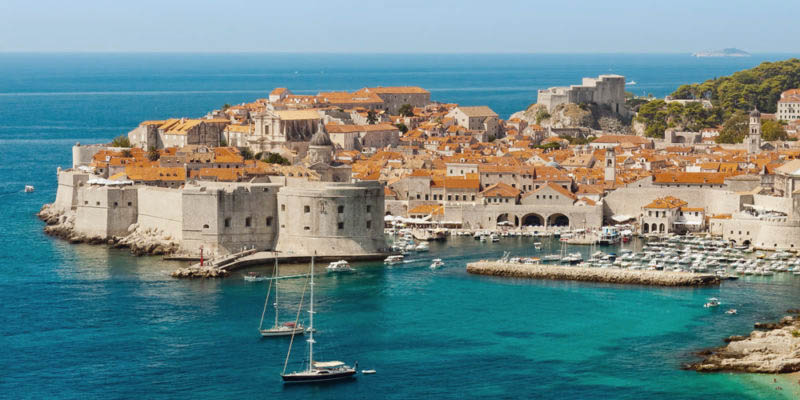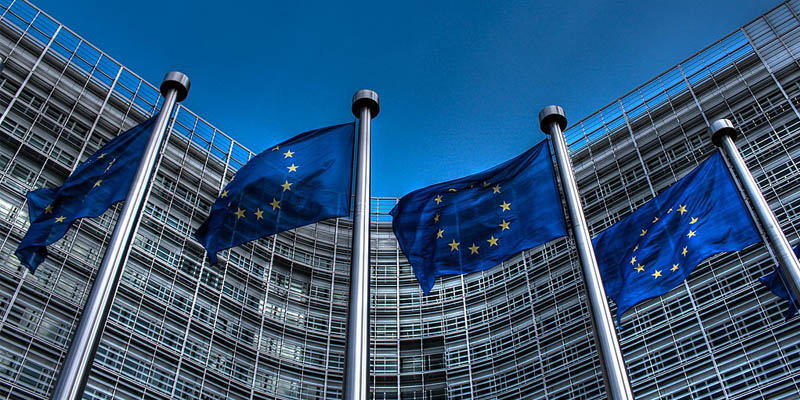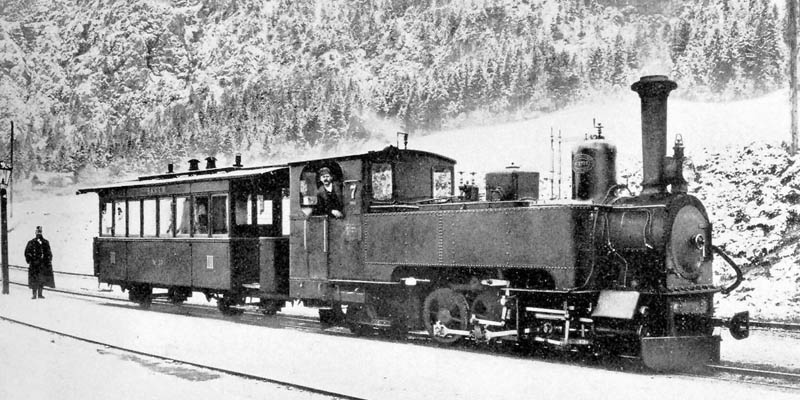We explore Europe, and describe its physical and cultural characteristics. In addition, we discuss the economy, religion and history of this continent.

What is Europe?
Europe is one of Earth's six continents and the fifth largest by area. It is bordered to the north by the Arctic Ocean, to the south by the Mediterranean Sea, the Black Sea and the Caspian Sea, to the east by the Ural Mountains, and to the west by the Atlantic Ocean. It has an area of approximately 3.87 million square miles (10 million km2), which accounts for 6.8% of the planet’s total land area.
Europe is home to some of the world's leading economic and political powers, including Great Britain, France, and Germany. The continent is also home to some of the most important cities in history as well as to some of the most visited worldwide, such as London and Manchester in Great Britain, Madrid and Barcelona in Spain, Berlin in Germany, and Paris in France.
How did Europe get its name? The origin of the name "Europe" is unclear, with several theories surrounding it. One one them suggests that the name comes from the Phoenician term ereb, meaning "evening" or "west", in reference to the continent's western location in relation to Phoenicia. Another theory holds that the name might be linked to a goddess named Europa, who, according to Greek mythology, was abducted by Zeus and taken to the island of Crete in the Mediterranean Sea.
CHARACTERISTICS OF EUROPE
- The climate varies according to the geographic location: it is temperate near the Mediterranean Sea, and polar cold in the north of the continent.
- It shows a wide variety of reliefs: plains in central Russia, high plateaus in the north of Great Britain, volcanoes, and mountain ranges like the Swiss Alps.
- The continent is experiencing the progressive aging of its population, a phenomenon resulting from two factors: increased life expectancy and a decrease in the number of births.
- It is made up of a complex combination of peoples and states historically confronted by social, cultural and economic conflicts, and therefore has a long tradition of wars and territorial disputes.
- Around 200 languages and local dialects are spoken. The languages with the largest number of speakers are Russian, German, French, Turkish, English, Italian, and Spanish.
- See also: Americas
Area, population and countries of Europe
Europe covers an area of 3.93 million square miles (10.18 million km2). It is the second-smallest continent on the planet after Oceania. Despite its relatively small size, Europe is densely populated, with over 750 million people.
Population of Europe
- The total population of the continent amounts to slightly over 740 million, which accounts for 9.4% of the world total. The most populous countries are Russia with 143 million inhabitants, Turkey with 84.7 million, and Germany with 84.3 million.
- A characteristic feature of the European population is its growing aging. The high quality of life combined with advances in medicine has increased life expectancy to more than 82 years in some countries. This situation is compounded by a decrease in the number of children people currently have. The combination of these two factors (people living longer and fewer children being born) is leading to a progressive aging of the European population.
Countries of Europe
- Europe is composed of 47 countries and other states including Monaco, San Marino, and Vatican City, which are territories with special status recognized by the international community.
- The largest country on the continent is Russia, with over 6.56 million square miles (17 million km2), although much of its territory is part of Asia. The second-largest is Turkey, with 301,160 square miles (780,000 km2), and the third-largest is France, with 248,264 square miles (643,000 km2).
- States with special status are recognized by their small area: San Marino covers 23.55 square miles (61 km2), Monaco 0.77 square miles (2 km2), and Vatican City only 0.15 square miles (0.4 km2).
Physical geography and climate of Europe

Temperatures on the European continent decrease from south to north. Europe has temperate climates near the Mediterranean Sea, and cold polar climates in the north of the continent. Rainfall is abundant in the center and north of Europe, and tends to decrease towards the south due to the influence of the Mediterranean climate, characterized by very hot and dry summers.
Three main types of relief can be found in Europe:
- Plains. The most extensive on the continent are located in northern France and Germany, Poland, the Netherlands, and central Russia.
- High plateaus. They cover a large portion of the Iberian Peninsula, the center of the continent, and the northern highlands of Great Britain and Scandinavia.
- Mountain ranges and volcanoes. The highest relief on the continent is found in the Alps, the Pyrenees, the Carpathians, the Urals, the Caucasus, and the volcanoes that make up Iceland.
As a result of the great variety of reliefs and the prevailing temperate and rainy climate, the European continent has a large number of rivers of varying discharge and length. The longest in Europe are the Volga, with a length of 2,175 miles (3,500 km), the Danube with 1,770 miles (2,850 km), and the Ural with 1,510 miles (2,430 km).
Other rivers of lesser extent but very important for European history and economy are the Rhine, the Elbe, the Seine, the Thames, the Po, and the Ebro.
- See also: Physical geography of Europe
Culture and religion in Europe
The European continent is considered the cradle of Western civilization, from which political, cultural, social and ideological values and models spread to the rest of the world. It is a highly complex combination of peoples and states historically confronted by social, cultural and economic conflicts, and therefore has a long tradition of wars and territorial disputes.
Europe is a culturally diverse continent where more than 200 languages and local dialects are spoken. The languages with the largest number of speakers are:
- Russian. It is the most spoken language on the continent, with over 140 million speakers. It is mainly spoken in Russia, but also in many Eastern European countries including Belarus, Moldova, and Latvia.
- German. It is spoken by over 95 million people in Germany, Austria, Switzerland, and Liechtenstein.
- French. It is spoken by over 80 million people in France, Belgium, Switzerland, and Luxembourg.
- Turkish. It is spoken by over 75 million people in Turkey, Macedonia, and Cyprus.
- English. It is spoken by over 70 million people in Great Britain. Additionally, it is the second language for more than 40% of the European population.
- Italian. It is spoken by over 60 million people in Italy, San Marino, Switzerland, and Vatican City.
- Spanish. It is spoken by over 45 million people in Spain.
The predominant religion in Europe is Christianity. The most widespread Christian religions are Orthodox (mainly in Russia, Greece, and Ukraine), Protestant (in Great Britain and parts of Germany and Switzerland), and Catholic (in Spain, Italy, Portugal, and Vatican City, among other countries).
The Muslim religion is also largely present in Europe, mainly in the Balkans and in Western Europe as a result of immigration. Other religions such as Buddhism and Judaism are also professed by millions of people.
Economy of Europe
Europe is one of the most developed regions in the world, boasting a diversified and highly advanced economy. Among the most developed countries in Europe are Germany, France, the United Kingdom, Russia, Italy, and the Netherlands.
These countries have highly industrialized economies that specialize in the production of machinery, chemical products, automobiles, and luxury goods. In addition, they are leaders in sectors such as tourism, fashion, technology, energy production, and financial services.
Other European countries base their economies on agriculture and fishing. Nordic countries such as Norway, Denmark, and Sweden are world leaders in the fishing industry, while countries in southern Europe like Spain, Italy, and Greece also specialize in the production of fruits, vegetables, olives, and wine.
The main trading partners of the European powers are the United States and China, while they also maintain important trade relations with other countries in Asia and Latin America. Trade within the European continent is also of great importance, with the free movement of goods and services between countries that are part of the European Union.
On the other hand, there are countries in Europe with lower economic growth, such as Bulgaria, Romania, and Ukraine (in Eastern Europe), and those in the Balkans, including Moldova, Albania, and Bosnia.
Political geography of Europe

The European Union is the world's largest economic and political organization, and comprises some of the richest countries on the planet. It has its own currency, the euro, which is used in most member countries and is one of the strongest and most stable currencies in the world.
The European Union was formed in 1993 with the entry into force of the Maastricht Treaty. Since then, the members of this organization have changed. Countries that were not part of the EU in 1993 have joined (the last was Croatia in 2013), while there have been others that have decided to leave, as was the case with Great Britain in 2020.
This regional bloc establishes a series of political institutions, such as the European Commission, the European Parliament, and the Council of the European Union, all of which aim to make decisions and establish policies for the entire Union.
The bloc further establishes that citizens of the member countries of the union can move freely without border restrictions. The same applies to trade: all goods traded within the EU can move freely without customs tariffs.
In addition to the members of the European Union, all European countries are full members of the United Nations. Some are also members of NATO (North Atlantic Treaty Organization), a military defense organization, and of the OECD (Organization for Economic Co-operation and Development), which promotes policies of economic and social cooperation.
History of Europe

The history of Europe traces back to classical antiquity, between the 5th century BC and the 2nd century AD, with the emergence of the earliest Greco-Roman civilizations. Greece was the first major empire formed by city-states known as polis. It reached its height under Alexander the Great in the 3rd century BC, excelling in science, art, astrology, mathematics, and philosophy.
Around the same period another major civilization, Rome, flourished. For about a hundred years both civilizations engaged in violent confrontations, until 146 BC, when Rome defeated Greece, occupying several of its territories.
The Roman Empire began its decline after the Crisis of the Third Century, between 235 and 284 AD. Political instability, social crises and economic problems, as well as pressure exerted by the peoples outside the Roman Empire, contributed to its downfall.
After the fall of the Roman Empire in the 5th century AD, Europe entered a historical period known as the Middle Ages. The Catholic Church became a powerful and dominant institution across Europe, its influence spreading among the monarchies in the region.
During this period, the Islamic expansion in southern Europe also occurred, leading to the creation of an extensive Muslim Empire in the Mediterranean. From the 15th century onward, most of the populations in Europe came under the rule of monarchies and aristocracies. Between the 15th and 18th centuries numerous major events in Western history took place, such as the conquest of America in 1492, the social revolutions against monarchies, and the French Revolution in 1789.
Europe is the continent to have exerted the greatest influence, direct or indirect, on other continents and countries. Starting in the 17th century, scientific and technological discoveries changed the course and pace of technological advances worldwide as a result of the first and second Industrial Revolutions between 1760 and 1850.
During the 20th century, the European continent was characterized by constant warfare that took place over territories and power: World War I between 1914 and 1918, the rise of dictatorial governments in Italy, Spain, and Germany during the 1930s, and World War II between 1939 and 1945.
Following the world wars, the European countries gradually joined the United Nations (UN) in 1945 with the aim of restoring diplomacy as a means of resolving conflicts between states. In 1957, they created the European Economic Community, the continental political organization that was the predecessor of the European Union (EU), established in 1993.
References
- Bohn, T. (2023). Los 10 idiomas más hablados de Europa. Babbel
- Comunidad de Madrid (s.f). ¿Qué es la Unión Europea? ¿Cómo funciona? ¿Qué hace? Madrid
- Ferrando Castro, M. (s.f). ¿Cuál es la religión principal de cada país de Europa? RedHistoria
- Unión Europea (2022). Datos y cifras sobre la economía de la Unión Europea. European-Union
Explore next:
Was this information useful to you?
Yes NoThank you for visiting us :)